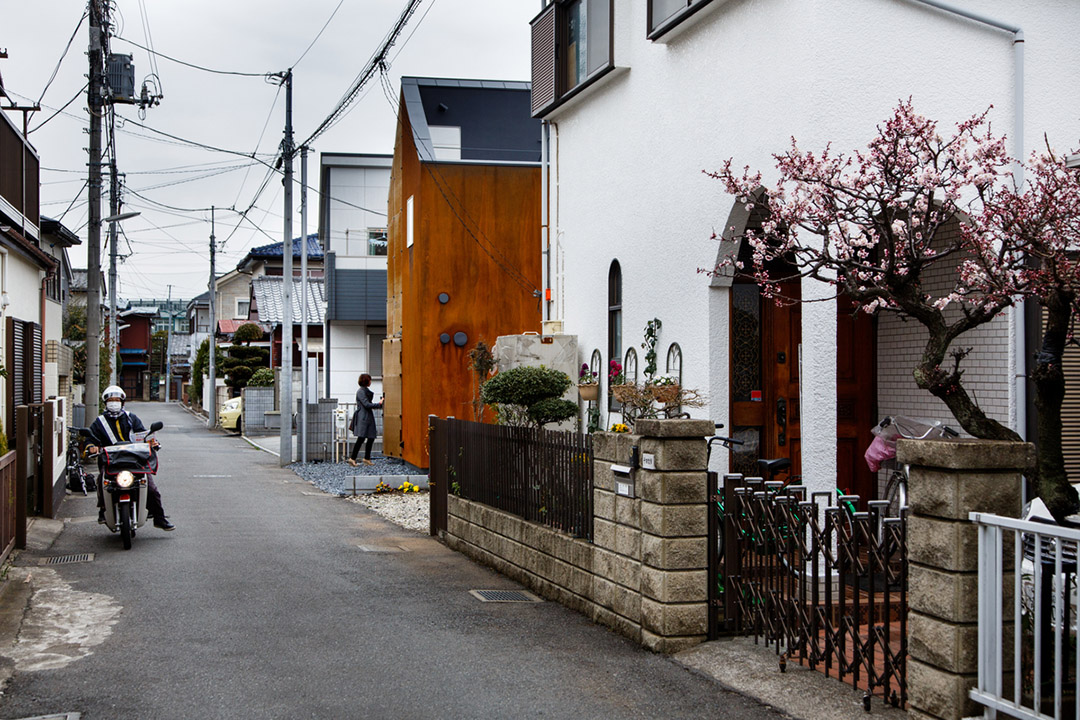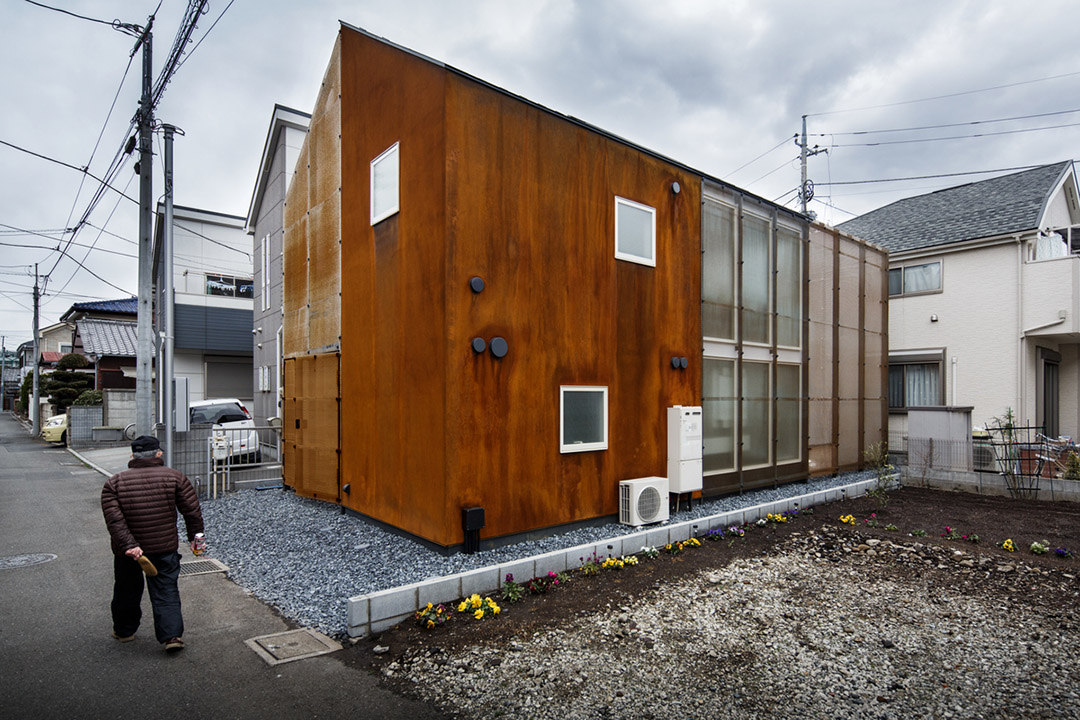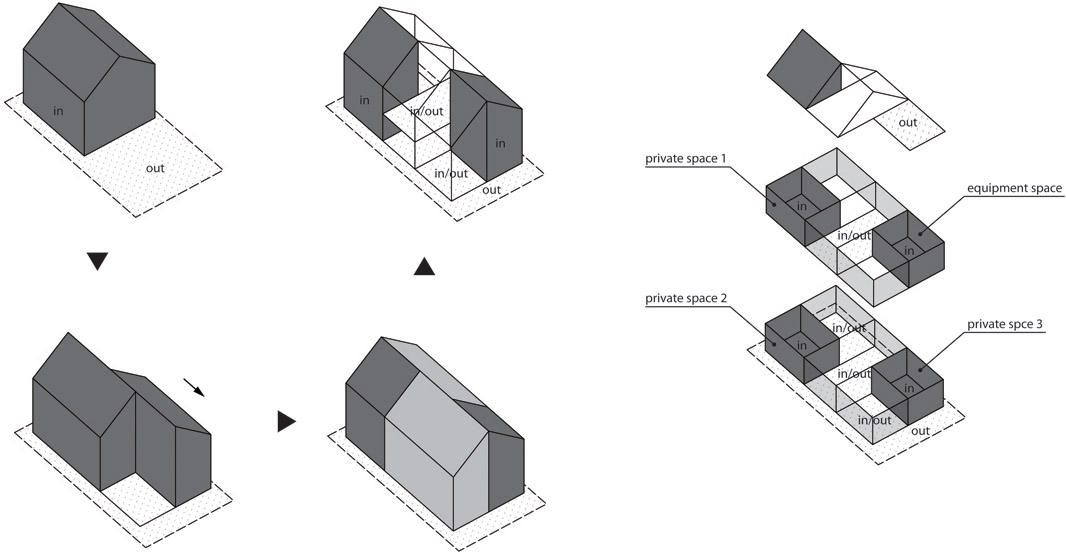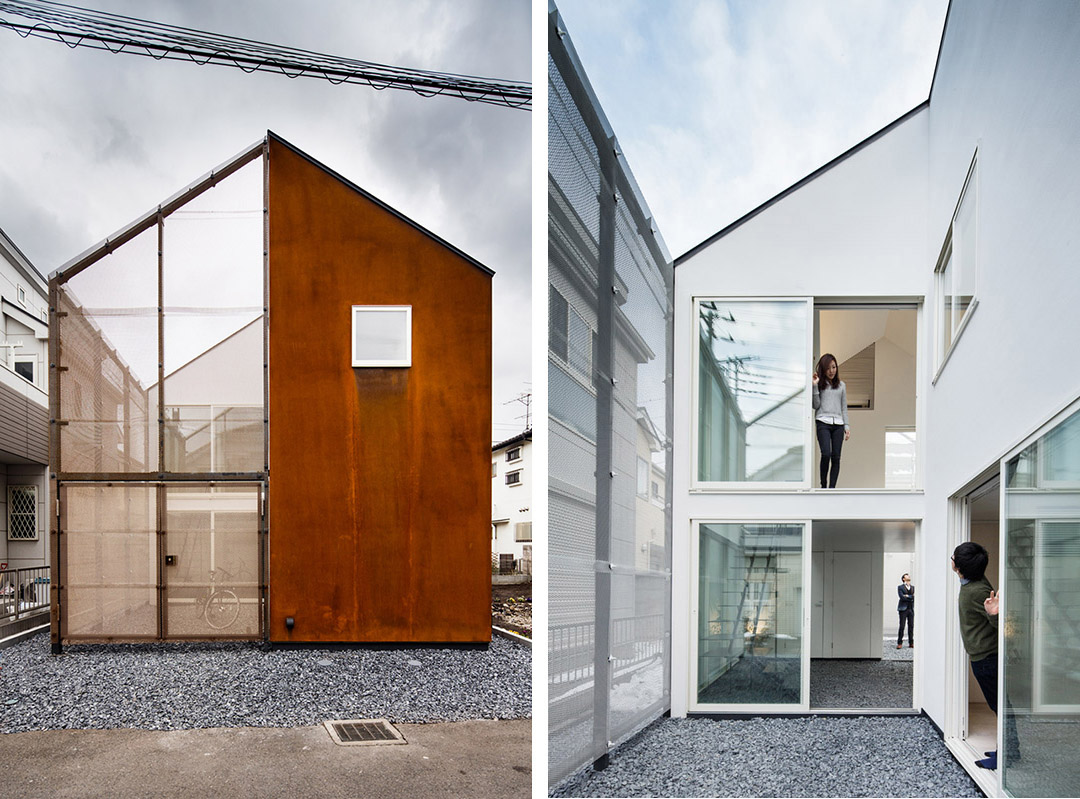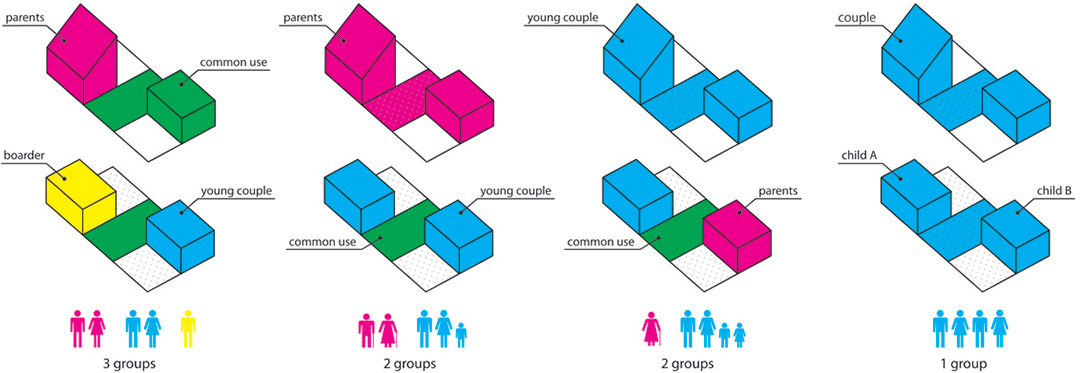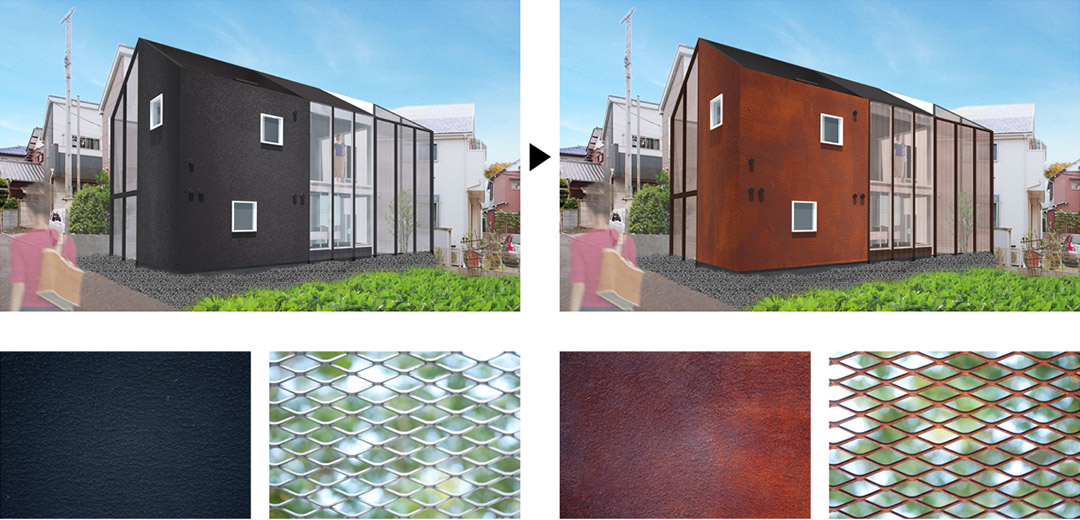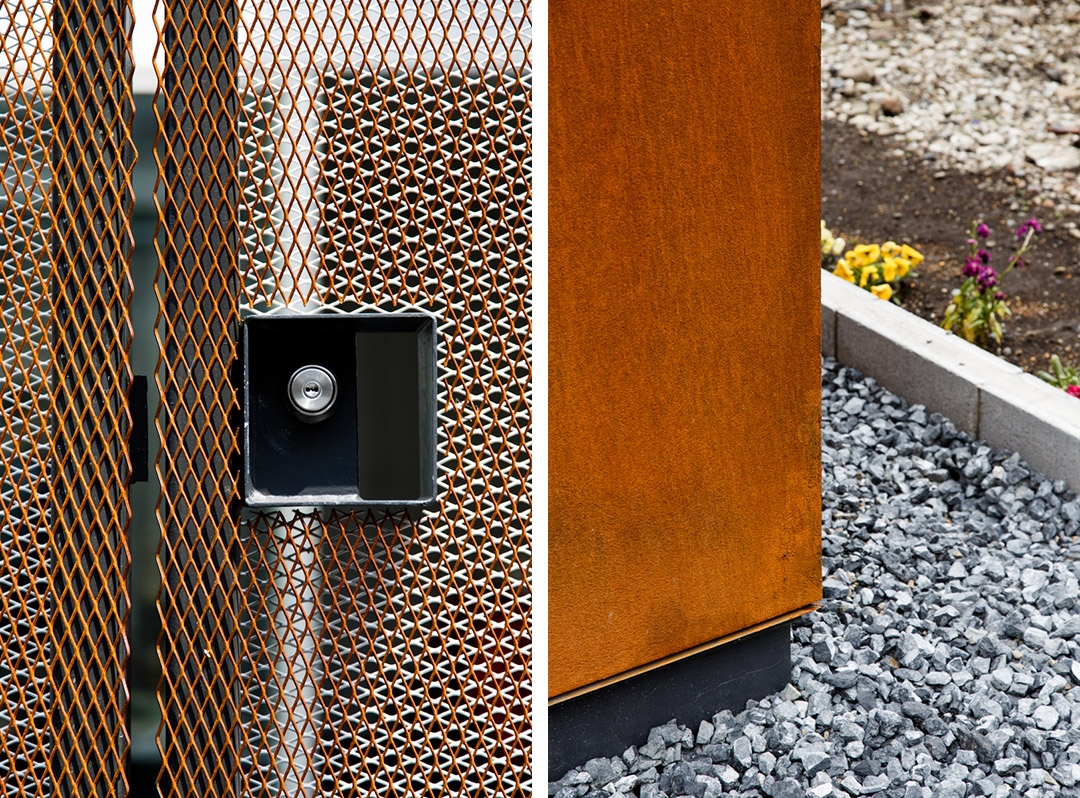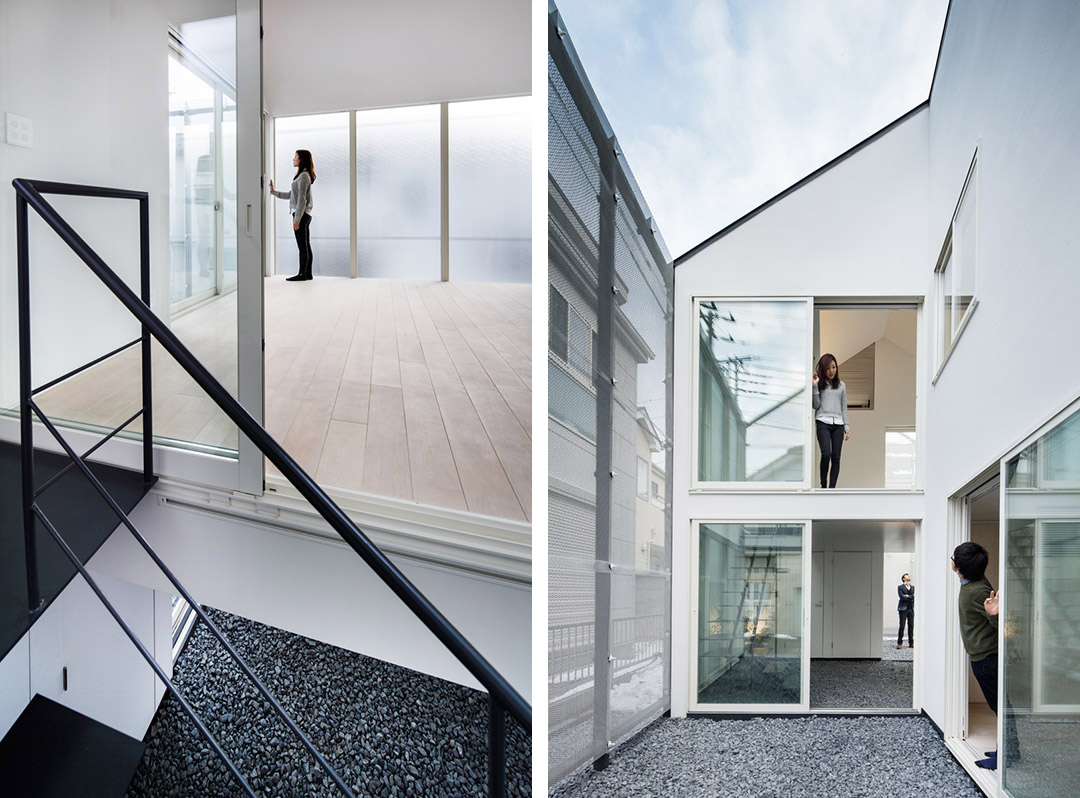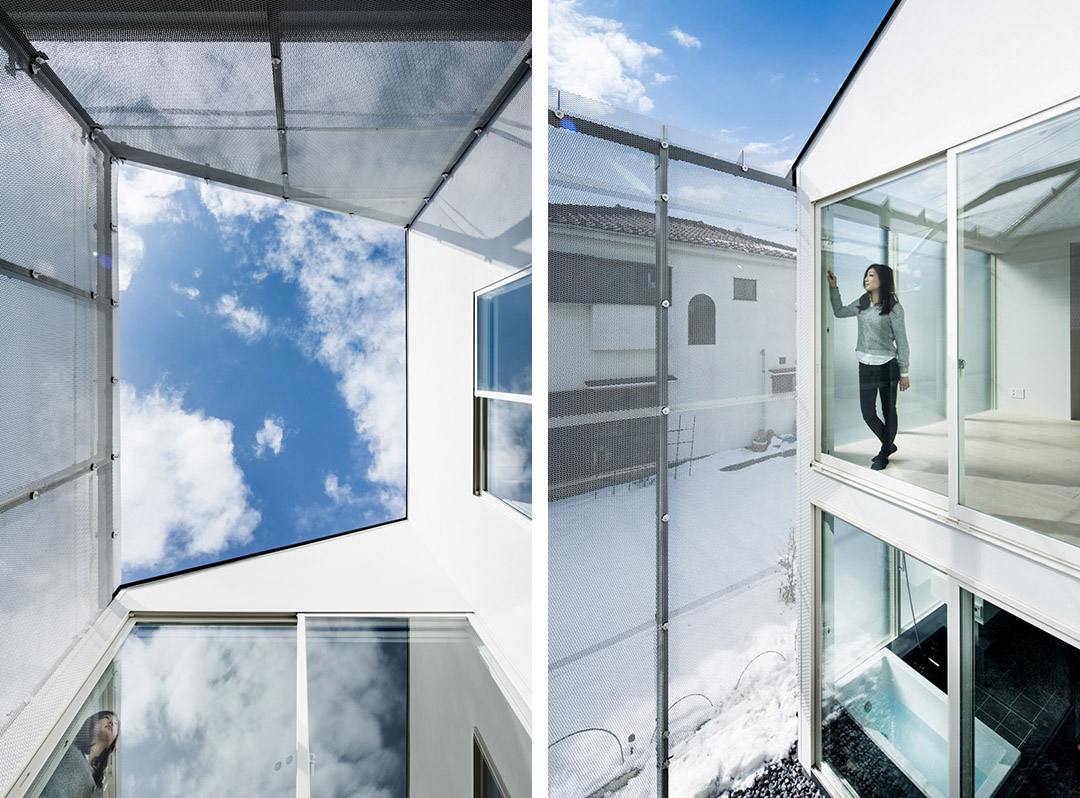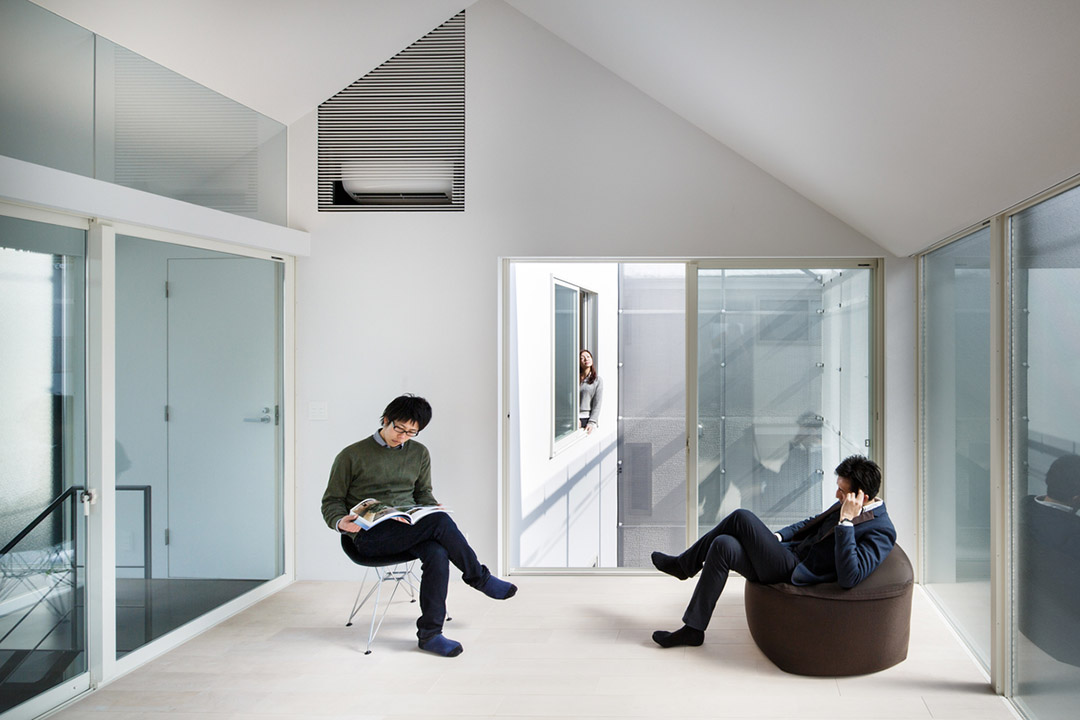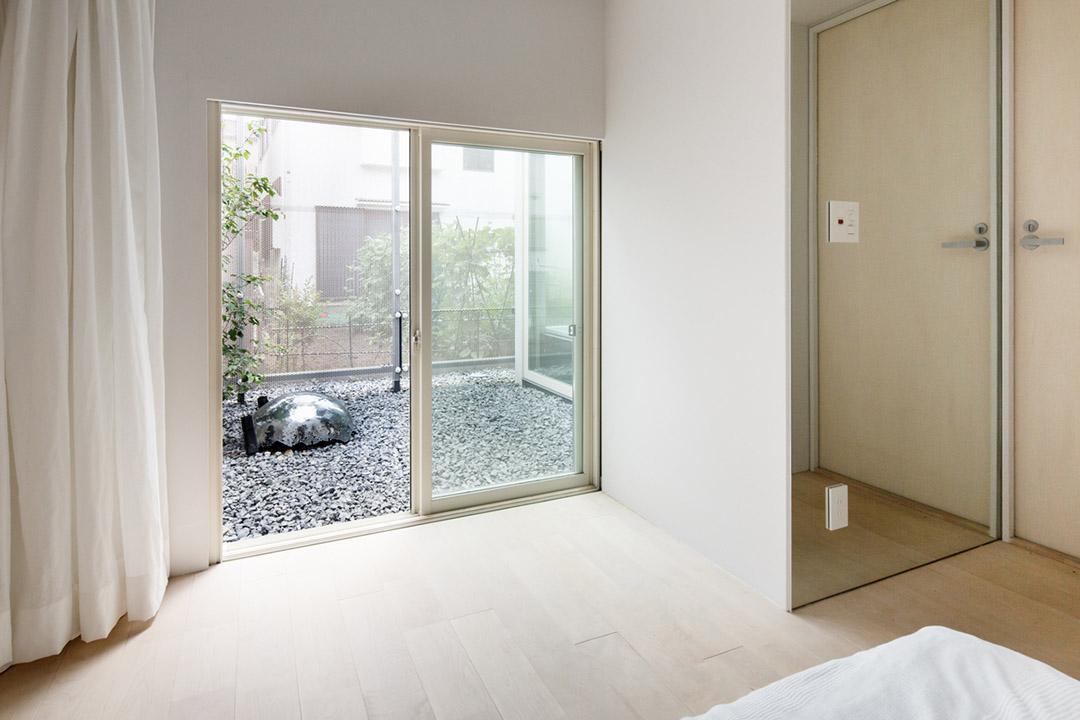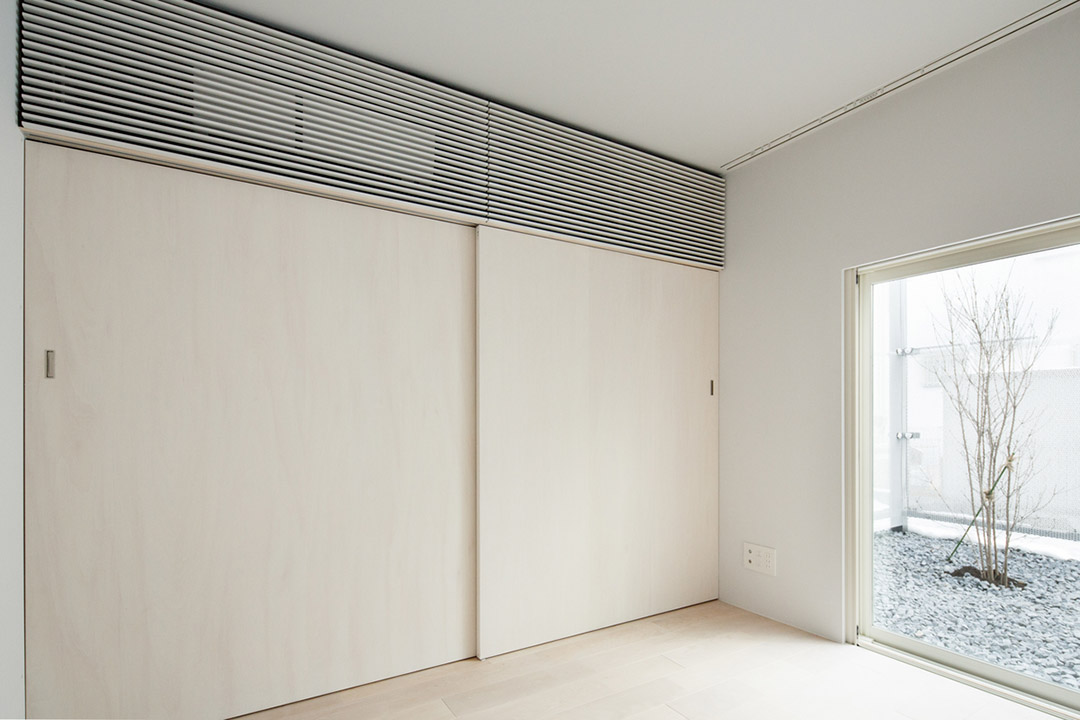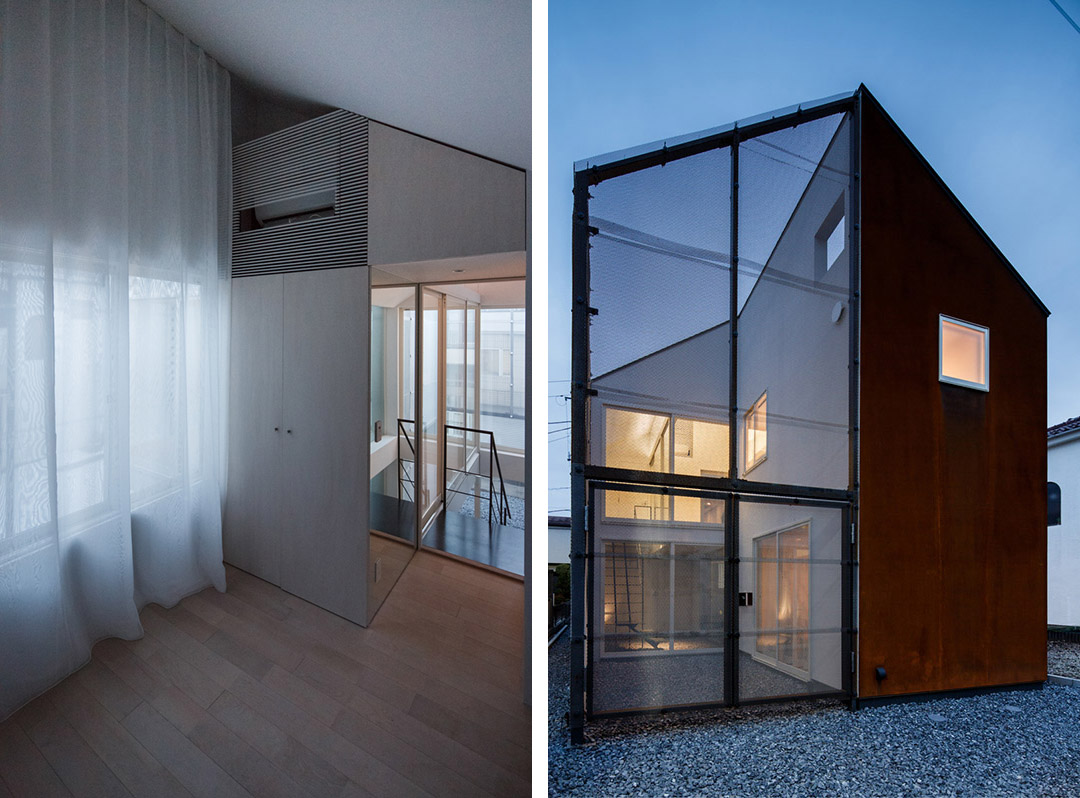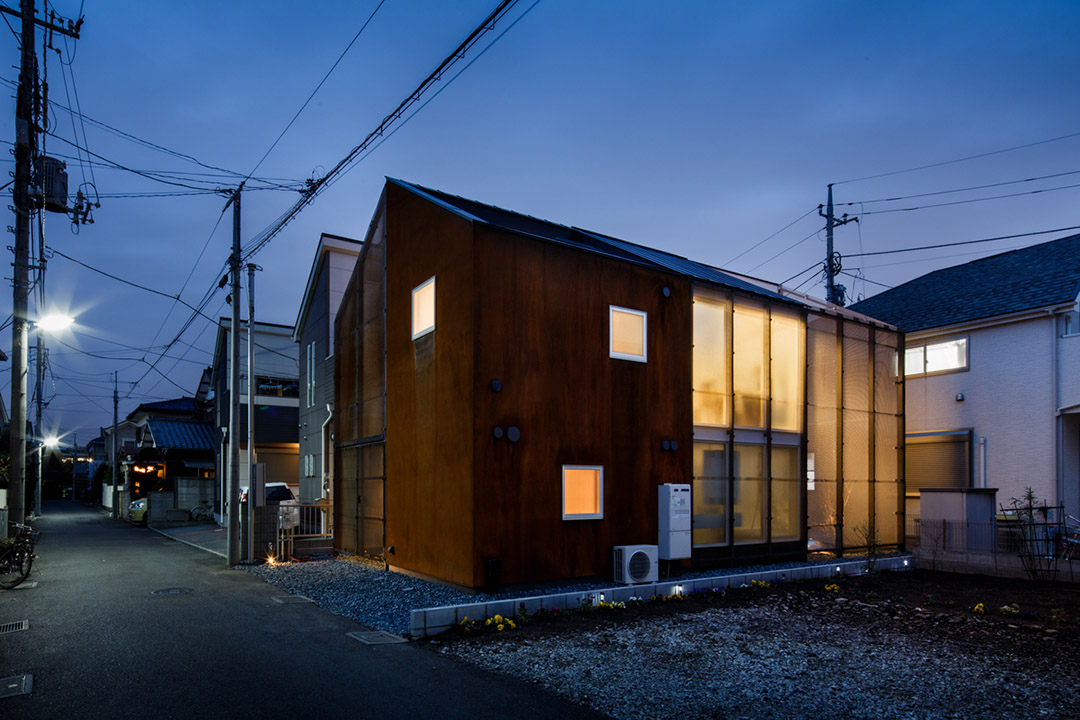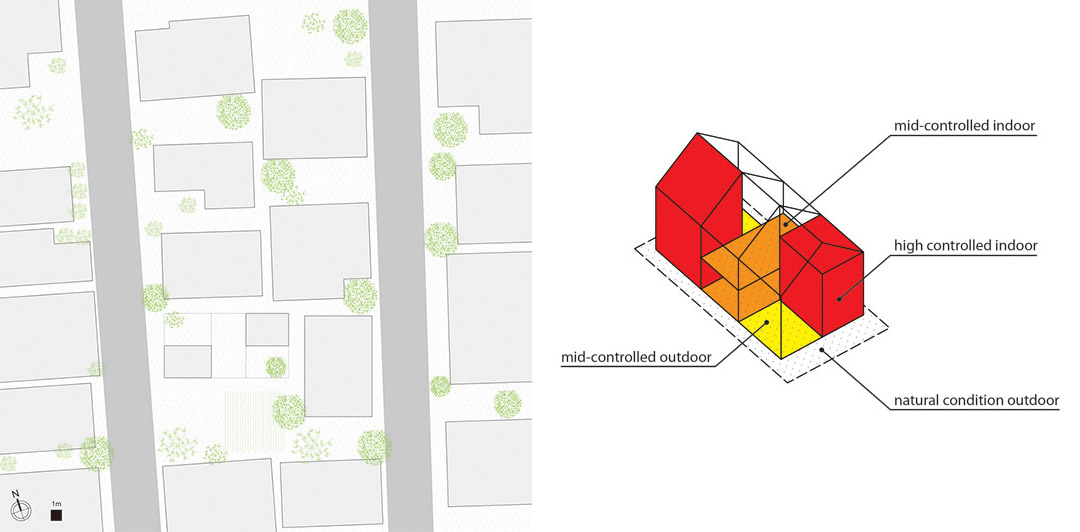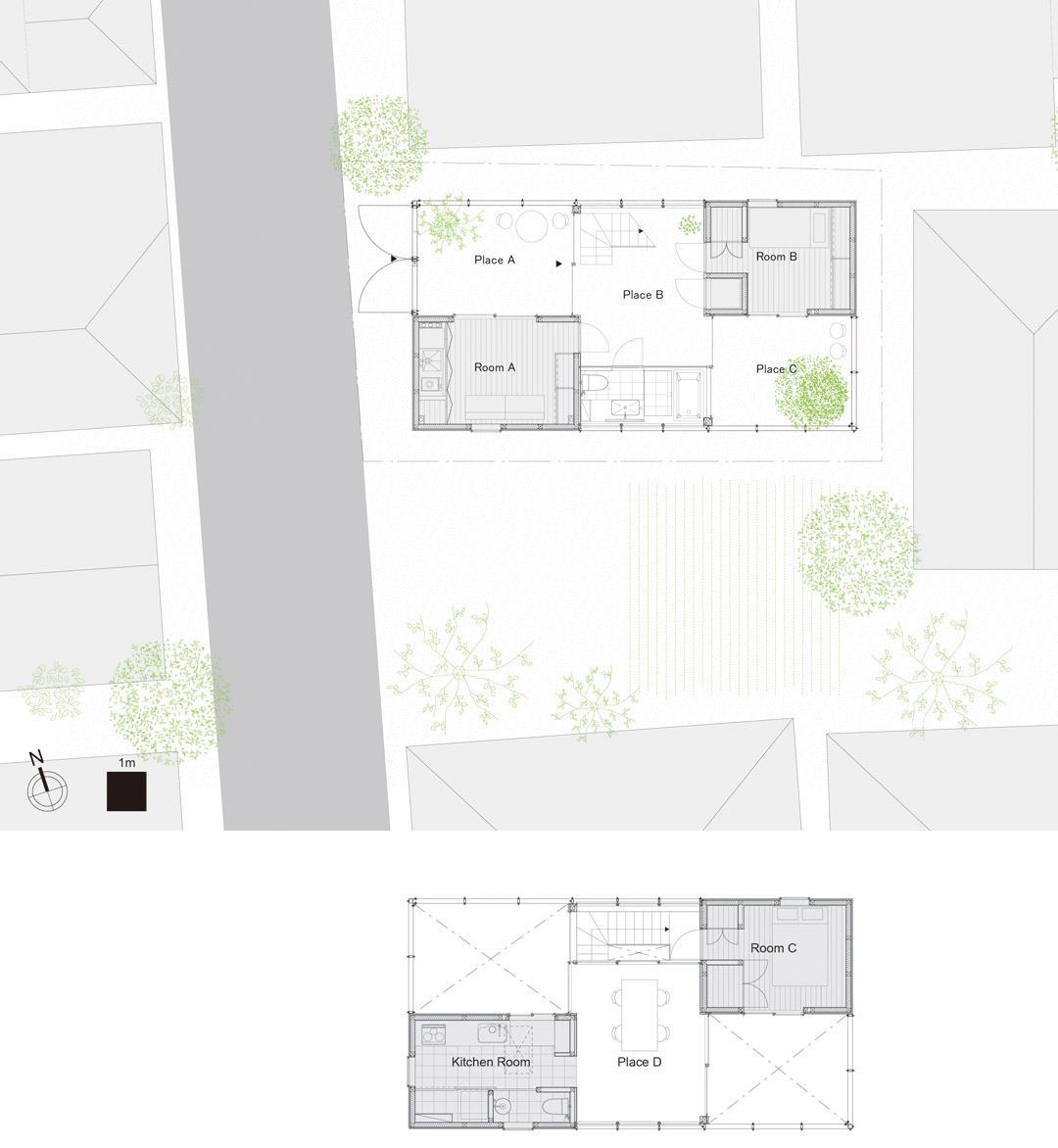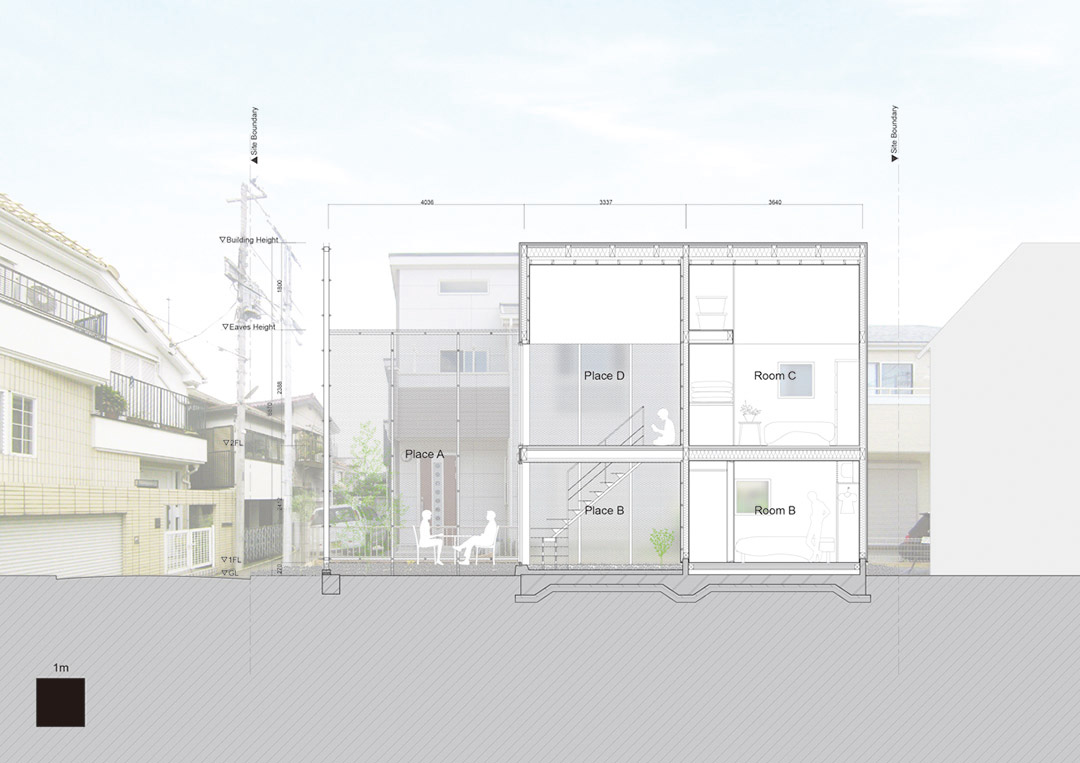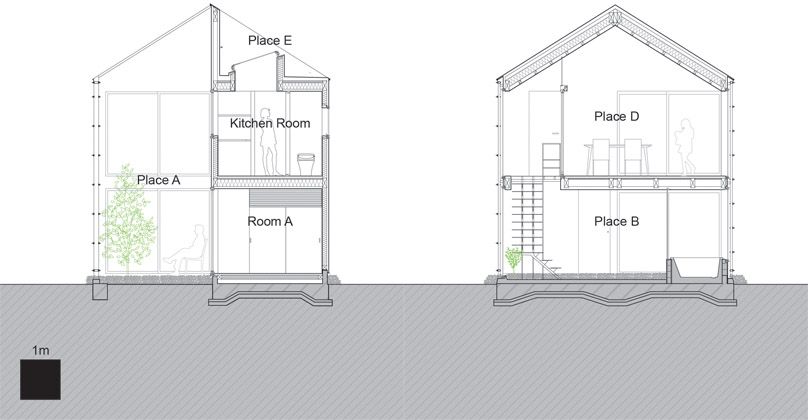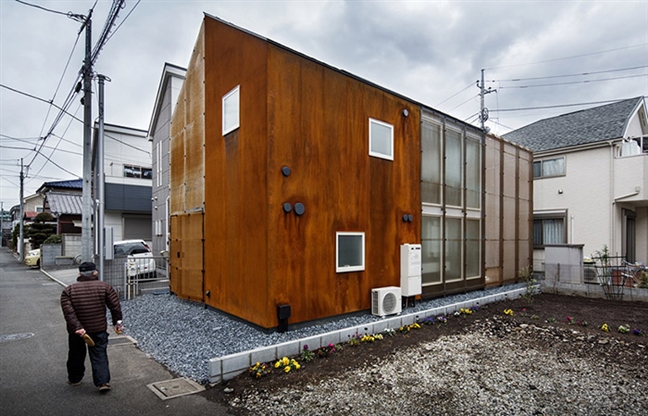非常感謝SUGAWARADAISUKE将以下內(nèi)容授權gooood發行(xíng)。
Appreciation towards SUGAWARADAISUKE for providing the following description:
這(zhè)座采用(yòng)鏽蝕鋼闆為(wèi)表皮的(de)東京小住宅對場所四個(gè)條件(jiàn)進行(xíng)了積極響應。
1,.場地(dì)小–因此延生對空間的(de)感官
2,多樣化(huà)(huà)的(de)生活–設置靈活度高(gāo)的(de)空間
3,不(bù)斷發生變化(huà)(huà)的(de)城市(shì)面貌–提供多樣化(huà)(huà)的(de)外表皮接觸外部環境
4,人工主導環境–提供多種備選方案
建築從內(nèi)到外響應場所,并具備可以靈活适應市(shì)民生活方式變化(huà)(huà)的(de)居住空間,以豐富和可持續的(de)全新(xīn)理(lǐ)念面世。
Built in the residential area of Tokyo, ‘ Transustainable House ‘ aims to respond to the 4 features of urban housing.
1) ‘Small building site’ – Extension of perceptional spaces beyond the limit
2) ‘Diverse style of living’ – Composition of spaces that allow arrangements
3) ‘Endlessly updating townscape’ – Surface that engraves the microclimate
4) ‘Artificial thermal environment’ – Diverse thermal environment that offer choices
These procedures make interior and exterior durable to different contexts of the site. The interior responds to transitions of residents’ lifestyles, while the exterior responds to the transitions surrounding the site. This house is not brought to perfection in the moments of the completion, buttargets to enrich the quality of the environment by being intimate with the long lapse of time. This project shows a new solution for sustainable architecture that metamorphoses its existence over the time.
1,.場地(dì)小–因此延生對空間的(de)感官。
在(zài)東京,房(fáng)屋場所小是普遍現象。建築師(shī)将有限的(de)居住空間最大化(huà)(huà)發掘,将居住的(de)空間切成小塊呈對角安排,讓之間與場地(dì)形成的(de)空間成為(wèi)半室內(nèi)的(de)居住空間,并賦予其半透明表皮,給人以延伸的(de)空間感。
1) ‘Small building site’ – Extension of perceptional spaces beyond the limit
In Tokyo, it is quite typical for a house to be built on a very small site. Therefore, in order to maximize the limited dwelling space, this house expands the dwelling space both inside and outside, and converts the entire site into a group of spaces with different qualities. Private rooms are placed diagonally in the site, while common areas are created between them, transforming the rest of the site into ‘semi-indoor’ residential area. The ‘semi-indoor’ areas extend the resident’s spatial perception beyond the site boundary over the enclosed semi-transparent walls.
2,多樣化(huà)(huà)的(de)生活–設置靈活度高(gāo)的(de)空間
如今,城市(shì)市(shì)民的(de)生活不(bù)再固定,遷移成為(wèi)常态。為(wèi)此這(zhè)所房(fáng)子(zi)可以适用(yòng)3種家庭生活的(de)狀态。如果将這(zhè)些理(lǐ)念推廣,日本很多民宅的(de)潛力将大為(wèi)提高(gāo)。
3,不(bù)斷發生變化(huà)(huà)的(de)城市(shì)面貌–提供多樣化(huà)(huà)的(de)外表皮接觸外部環境
建築都存在(zài)于環境中,也會(huì)反作用(yòng)于環境,為(wèi)此建築師(shī)探索了建築外觀與環境的(de)關聯。小住宅上面的(de)鏽蝕鋼闆和穿孔金屬網會(huì)随著(zhe)時間的(de)推移,風雨的(de)侵蝕而顯現出斑駁與歲月留痕。建築的(de)外觀,由建築師(shī)設計(jì)一半,另一半,交給了自然。
4,人工主導環境–提供多種備選方案
都市(shì)中的(de)人們慣用(yòng)空調和冷氣來調節室溫。而這(zhè)所房(fáng)屋提供了4個(gè)人與自然接觸的(de)梯度場景:全控制室內(nèi),中控制室內(nèi),中控制室外,不(bù)能控制的(de)室外。有利于居民感知四季變遷。
2) ‘Diverse style of living’ – Composition of spaces that allow arrangements
Today, city citizens migrate between cites constantly. These nomadic style leads to the diversification of family structure and the relationship between family members/housemates.
The group of private rooms and common areas in this residence responds to this issue as well, by allowing free arrangement of spaces. The following diagram shows how residential areas in this house could be managed according to 3 families’ life circles.
↑ Arrangement of spaces responding to the transition of family structure (e.g. 3 groups/2 groups/2 groups/1 group)
Currently, there are 50,000 individual houses in Japan. If this method is applied to all of them, parts of those private houses can be opened to not only urban nomadic residents but also to the community. This method is potential to play a major role in the society as a stock of closed private dwelling spaces
3) ‘Endlessly updating townscape’ – Surface that engraves the microclimate
Architecture cannot exist without giving any influence to the surrounding context. This project explores the possibility to have a unique appearance by having a strong relationship with the context.
If this is subjected to the nei***orhood residences, the relation keeps collapsing every few years because of the scrap-and-build townscape of Tokyo. Therefore, this house relies on the site-specific micro-climate.
This aim is realized by the exterior surfaces with unique iron-powder-mixed-plaster and the expanded metal.
Exposed to the rain, wind, and sunlight, the weathering of the surface proceed dappled rust on the surface, memorizing the vernacular micro-climate over the time. The architectural appearance is not designed by an architect, but is defined by the actual behavior of the natural phenomena.
↑ Iron-powder-mixed-plaster and expanded metal before and after weathering
4) ‘Artificial thermal environment’ – Diverse thermal environment that offer choices
Thermal environment in urban areas tend to be a simple choice between the artificially controlled indoor, and the rest of the uncontrolled outdoor.
In this house, the artificial and the natural are blended in gradient, which produce diverse choices to be made by the thermal perception of the residents.
This house offers 4 types of approach to the air condition – high controlled indoor, mid-controlled indoor, mid-controlled outdoor and natural condition outdoor. Those 4 approaches create countless thermal condition in between, not only because of the changes of season but also by the use of mechanical air conditioning and windows/doors, and stimulate the residents to search perceptively for the adequate places each time.
Project name: Transustainable House
Location: Chofu, Tokyo
Concept Design: SUGAWARADAISUKE (Daisuke Sugawara, Noriyuki Ueakasaka, Hiroshi Narahara)
Schematic Design: SUGAWARADAISUKE (Daisuke Sugawara, Noriyuki Ueakasaka, Hiroshi Narahara)
Design Development: SUGAWARADAISUKE (Daisuke Sugawara, Noriyuki Ueakasaka, Hiroshi Narahara)
Design Corporation for DD drawings: Yuko Hiura, Chihiro Kotaka, Masayuki Harada
Structural Design: RGB Structure (Masayuki Takada)
Lighting Design: TOH design (Aki Hayakawa)
Plantation Design: GA Yamazaki
Plaster Work: Nurikan
Construction: Sou Kenchiku Co.,Ltd.
Structure: Wood
Site area: 100.08 sqm
Building area: 38.62 sqm
Gross Floor area: 76.30 sqm
Height: 6.87m
Number of stories: 2
Design Period: Apr. 2012 – Apr. 2013
Construction Period: May 2013 – Feb 2014
Photographer Photos: JéRéMIE SOUTEYRAT






